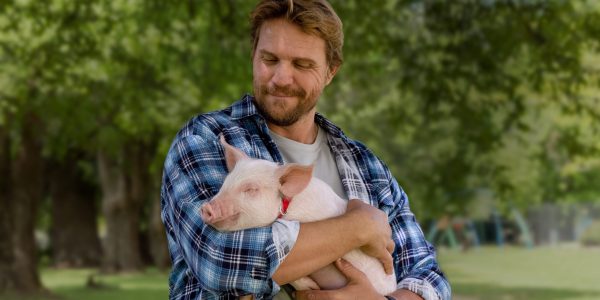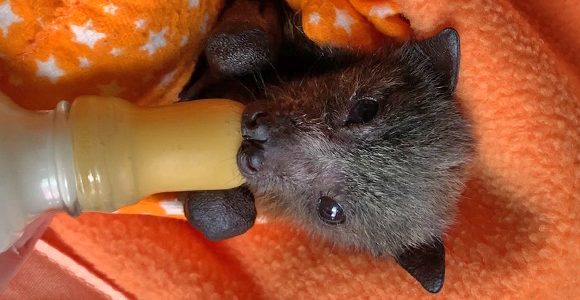Do you know what’s really being marketed in the chiller section of the grocery store? (Spoiler: May contain petrochemical dyes and cause severe asthma attacks.)
1. Red meat. Really red meat.
Have you ever really taken in how all the meat at the supermarket looks the same — shiny, wrapped in plastic, and bright red as Snow White’s poison apple. It’s all designed to make you think it’s fresh, but if fairy tales have taught us nothing else it’s that things aren’t always as they seem…

Brown, raw meat isn’t traditionally considered very appetising, so through a process called ‘modified atmosphere packing’ (MAP) supermarkets and grocers have found a way to make meat look fresher — for longer. But what’s really going on?
"We basically take the natural gases in ambient air and change the percentage ratio of them."
MAPing (using carbon monoxide or dioxide) may make the spoilage process look like it’s going in slow motion but, for all its appearance of freshness, beneath its rosy-red exterior the meat is still decomposing. Now you just can’t tell by looking at it.

The shelf life guidelines change, but MAP treatment means that meat sitting in the chiller section at the supermarket might be the remains of a cow, pig, fish, lamb or chicken killed weeks or even months ago. Brown meat can also be ‘flushed’ with gas to make it look red and “fresh" again, while butchers in Sydney were busted in 2010 for illegally using sulphur dioxide (a major ingredient in many batteries and responsible for serious allergic reactions in people) to disguise old or rotting meat. Butchers were busted again in 2011. And again in 2015. Each time was the ‘last time’, of course…
While Food Standards Codes allow certain amounts of sulfur dioxide to be used as a preservative in some processed meat, including mince, mortadella, chicken loaf, frankfurters, luncheon meats, salami and manufactured hams, it’s still safest to avoid them because, you got it, they’re the very same meat products that have been proven to be class I carcinogens. That means they’re associated with the highest risk level and cause of cancer, particularly colorectal and stomach. And red meat, such as beef and lamb, don’t fare much better in the health stakes either.
"With ‘case-ready’ MAP meat using this type of gas mixture, it is possible that spoilage and the risk of a food-safety hazard could increase while the product still retains a bright red bloom and appears edible."
2. Salmon pink — or salmon grey?
You might wonder what coloured pencils have got to do with fish, but read on! Do you remember in primary school when everyone wanted a pack of Derwent’s? Most coveted of all was the rare 120 collection, with all the colours of the rainbow and more — including #1620, a blushing pinky-orange called “Salmon".
Because when most people think of salmon, they think pink. In the wild, salmon are pink because of their natural diet (which is rich in a red substance called astaxanthin) and all the exercise they get swimming up fast-flowing rivers. Farmed fish are denied both these things, so they’re unnaturally dosed with artificial astaxanthin to make them look wild.
Some critics may try to argue that although most astaxanthin is artificially derived from petrochemicals, it can also be a naturally occurring substance. While this is true, it fails to address why colour additives are needed to dye farmed fish in the first place …
Kept in intensely crowded pens, competing for unnatural pelleted food, never having a moment’s peace to swim free in the boundless oceans and rivers that should be their home … Is it any wonder some farmed fish are so stressed out that they suffer and even die from what in humans would be called extreme depression?
This stress and lack of exercise also often makes the flesh of farmed salmon grey and flabby. But instead of improving the lives of the fish in their care, by offering them more space and a better diet, fish farmers can instead pick and mix from an additive colour chart to dye the fish a more customer-appealing colour — which then demands a higher price…

But it’s not only fish who suffer terribly as a result of intensive farming. As exposed in a hard-hitting 4 Corners program, ‘Big Fish‘ — the environmental impacts of fish factory farms are an unseen killer, lying beneath the waves, that threaten the very future of Australia’s beautiful oceans.
3. Golden yolks: not all they’re cracked up to be
Carefully marketed images of smiling families or cartoon suns on egg cartons are designed to lull customers into believing that the hens lead happy lives (even though the reality is often very different).

Similarly, some egg farmers want you to think that a bright yellow or orange egg yolk means that the hen who laid the egg had a healthy, contented life with plenty of space and freedom, enjoying a well-balanced and natural diet…
Cashing in on the romantic ideal of hens scratching around happily in a paddock, it’s reported that some egg farmers are artificially manipulating the colour of egg yolks by putting additives into the hens’ food to fake that golden ‘sunny side up’ complexion.
Take back control of mealtimes!
Don’t let yourself get fed on marketing spin! As more and more people learn the truth about animal farming, and the harsh realities of meat, dairy and egg production, they’re refusing to support these destructive industries.
Discover what else ‘Big Agriculture’ has to hide — and how you can take the first steps towards a healthier, more enjoyable and kinder way of eating.






